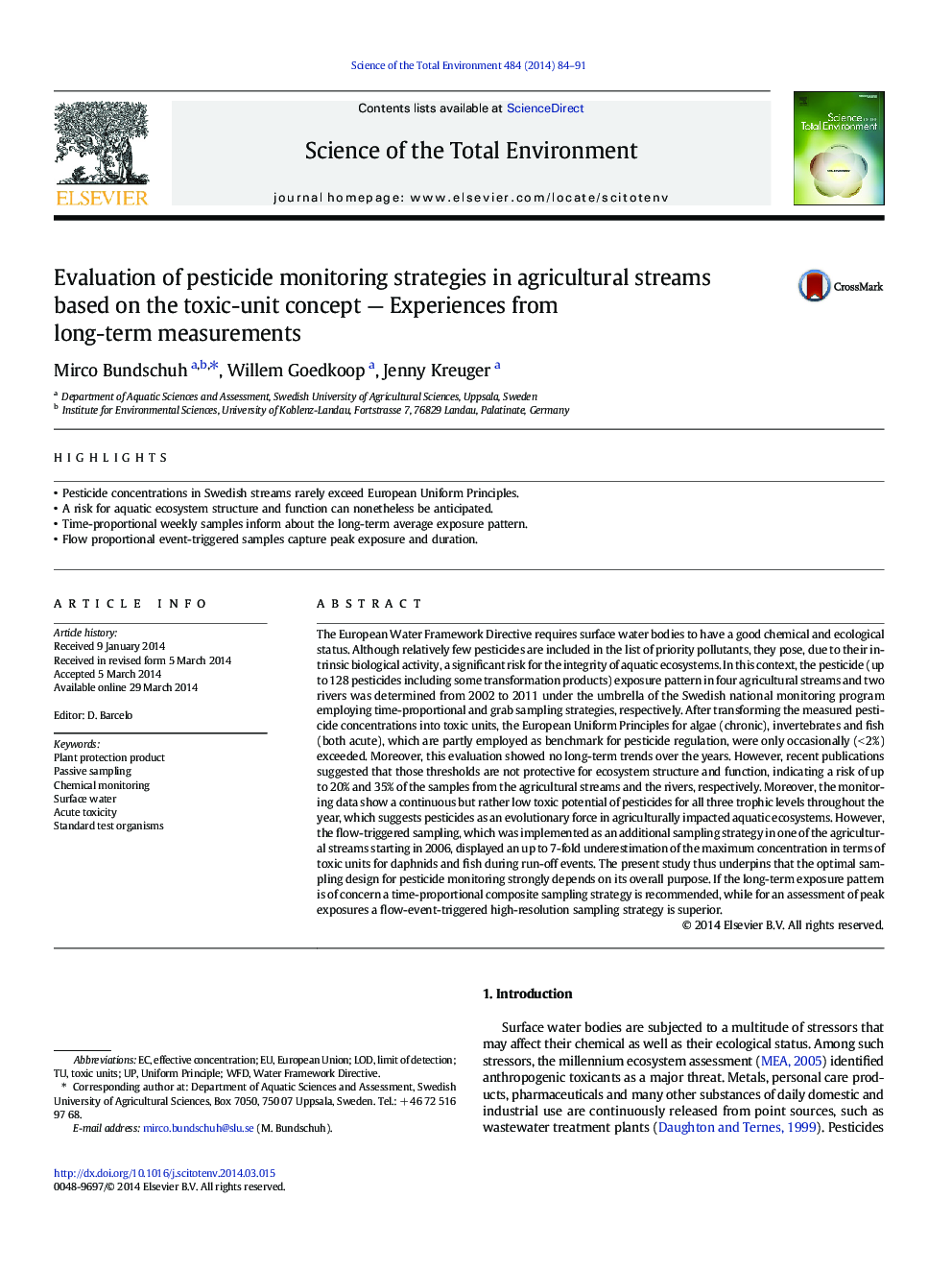| کد مقاله | کد نشریه | سال انتشار | مقاله انگلیسی | نسخه تمام متن |
|---|---|---|---|---|
| 6330599 | 1619784 | 2014 | 8 صفحه PDF | دانلود رایگان |
عنوان انگلیسی مقاله ISI
Evaluation of pesticide monitoring strategies in agricultural streams based on the toxic-unit concept - Experiences from long-term measurements
ترجمه فارسی عنوان
ارزیابی استراتژی های نظارت بر آفت کش ها در جریان های کشاورزی بر اساس مفهوم واحد سمی - تجارب از سنجش درازمدت
دانلود مقاله + سفارش ترجمه
دانلود مقاله ISI انگلیسی
رایگان برای ایرانیان
کلمات کلیدی
WFDSurface water - آبهای سطحیEuropean Union - اتحادیه اروپاLOD یا Limit of detection - حد تشخیصWater Framework Directive - دستورالعمل چارچوب آبAcute toxicity - سمیت حادeffective concentration - غلظت موثرlimit of detection - محدودیت تشخیصplant protection product - محصول حفاظت گیاهیChemical monitoring - نظارت بر مواد شیمیاییPassive sampling - نمونه گیری منفعلToxic units - واحدهای سمی
موضوعات مرتبط
علوم زیستی و بیوفناوری
علوم محیط زیست
شیمی زیست محیطی
چکیده انگلیسی
The European Water Framework Directive requires surface water bodies to have a good chemical and ecological status. Although relatively few pesticides are included in the list of priority pollutants, they pose, due to their intrinsic biological activity, a significant risk for the integrity of aquatic ecosystems. In this context, the pesticide (up to 128 pesticides including some transformation products) exposure pattern in four agricultural streams and two rivers was determined from 2002 to 2011 under the umbrella of the Swedish national monitoring program employing time-proportional and grab sampling strategies, respectively. After transforming the measured pesticide concentrations into toxic units, the European Uniform Principles for algae (chronic), invertebrates and fish (both acute), which are partly employed as benchmark for pesticide regulation, were only occasionally (<Â 2%) exceeded. Moreover, this evaluation showed no long-term trends over the years. However, recent publications suggested that those thresholds are not protective for ecosystem structure and function, indicating a risk of up to 20% and 35% of the samples from the agricultural streams and the rivers, respectively. Moreover, the monitoring data show a continuous but rather low toxic potential of pesticides for all three trophic levels throughout the year, which suggests pesticides as an evolutionary force in agriculturally impacted aquatic ecosystems. However, the flow-triggered sampling, which was implemented as an additional sampling strategy in one of the agricultural streams starting in 2006, displayed an up to 7-fold underestimation of the maximum concentration in terms of toxic units for daphnids and fish during run-off events. The present study thus underpins that the optimal sampling design for pesticide monitoring strongly depends on its overall purpose. If the long-term exposure pattern is of concern a time-proportional composite sampling strategy is recommended, while for an assessment of peak exposures a flow-event-triggered high-resolution sampling strategy is superior.
ناشر
Database: Elsevier - ScienceDirect (ساینس دایرکت)
Journal: Science of The Total Environment - Volume 484, 15 June 2014, Pages 84-91
Journal: Science of The Total Environment - Volume 484, 15 June 2014, Pages 84-91
نویسندگان
Mirco Bundschuh, Willem Goedkoop, Jenny Kreuger,
